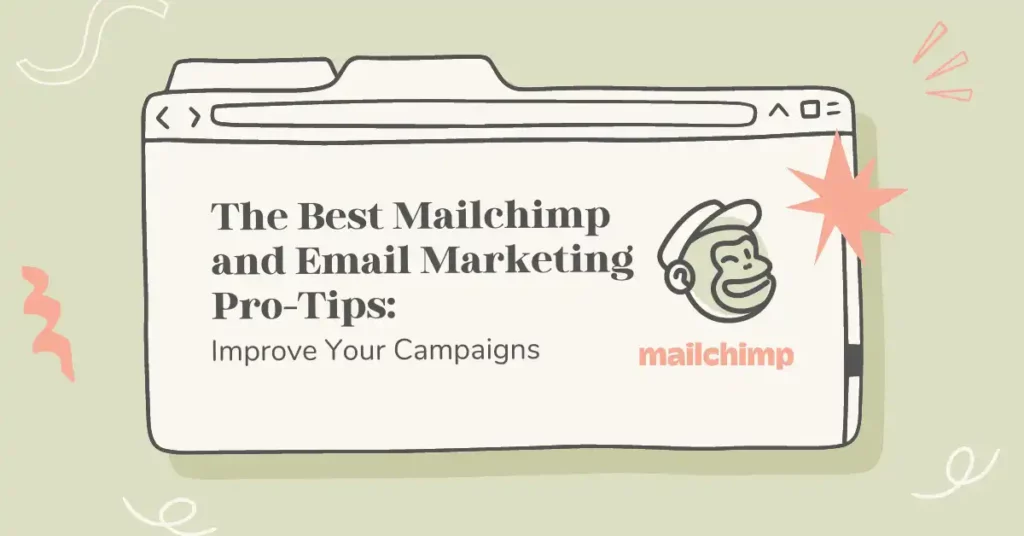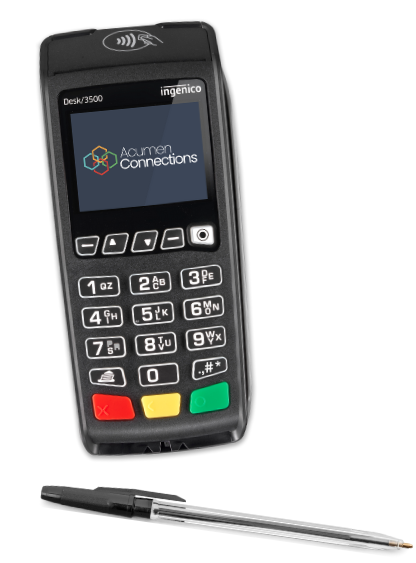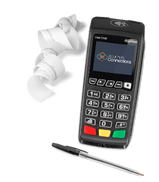Email marketing pro tips: How to use Mailchimp to get a better open rate, click-through rate
Follow our beginner’s guide to Mailchimp, or Chimpmail, to discover how to improve email design and optimize subject lines for a better open rate. Wondering why your email campaign isn’t working? Stick with us to learn the best email marketing tips for 2021.
Email marketing may feel like a waste of time, given your own experiences.
Daily archiving, deleting, marking as spam. You know the drill. But all that changes when you look forward to receiving a company’s emails. Those emails never get lost in your inbox. In fact, you can’t wait to open them.
Level up your payment game
Take payments with confidence. Make our YouTube channel your go-to for all things payment processing.
New and returning customers want to engage with your emails and hear from you. Email marketing is one of the most cost-effective marketing strategies, and — get this — posts one of the highest ROIs. Look at paid advertising campaigns and the hundreds (or thousands) spent on them and email is a no-brainer.
Shall I mention the audience? The number of global email users is expected to reach 4.59 billion by 2025. For comparison, Facebook has 2.9 billion active monthly users globally.
It’s a good time to take advantage of the benefits of email marketing. You see, companies whose emails generate a presence in consumers’ inboxes tend to make a lot of money. Email helps effectively reach target customers and boost conversions and revenue.
Listen to this: Two-thirds of customers have made a purchase because of email marketing.
Wow! Email can mean big money.
But it’s not a cake walk. As you might imagine, email is super competitive. Hear me out, being in someone’s email is a privilege. But it’s important you are. Because there’s a good chance your competition is — and you should be, too.
Tried email marketing and not had much luck? Wonder why your emails aren’t read? Question why your open rate is low and your click-through rate is even lower?
Email marketing services like Mailchimp allow you to make better emails that actually get opened. Follow this guide and I’ll share with you everything you need to know about email marketing. I’ll highlight some different options available through Mailchimp. Plus, I’ll talk about best practices for optimizing emails through Mailchimp.
This is primarily a beginner’s guide to Mailchimp — sometimes called Chimpmail (we mix it up, too). But more experienced Mailchimp users will also find tidbits on how to better optimize emails and build effective campaigns.
What is Mailchimp used for?
Mailchimp is an email marketing platform that allows you to keep in touch with customers and other contacts. Use this marketing tool to craft beautiful emails, surveys, and more. Then send them out in a mass email wave.
Mailchimp is one of those programs in the digital marketing world that just makes sense. It’s made a name for itself, and is synonymous with email campaigns.
Sure, there are other programs out there like Constant Contact, Sendinblue, and 10 more that went live since I started writing this. There’s nothing wrong with those options. Some even have better features than Mailchimp. But I like Mailchimp, especially for small businesses.
Mailchimp pricing
Mailchimp has a free version for small businesses. All Mailchimp basic features are available in its free program. Users will find marketing channels, 1-click automations, and premade templates in the free version.
Additionally, the service also allows users to easily build and manage surveys, landing pages, and websites.
Companies are limited to email lists of about 2,000 consumers in the free plan — which is plenty for businesses starting out. For the price of Netflix — $10-$15 a month — businesses can unlock even more features with Mailchimp.
What is email marketing — and why do it?
Email marketing isn’t spam or a personalized note from a friend. It’s somewhere in the middle.
Done well, email marketing is both relationship-building and profit-building.
You should use email to build upon the existing customer relationship or form new ones. You should also deliver valuable content — information that helps your customer achieve their goals.
If you want to do email marketing right, remember it’s not about your brand. It’s about your customer. If you put this into practice, you’ll have an email campaign that people look forward to receiving.
Why email marketing? It’s a cost-efficient way to connect with customers. Building good emails is quite simple, too. With email-building services, it doesn’t take an expert to build a successful email campaign. Take Mailchimp. Mailchimp is rather affordable, and free for some customers. Start to finish for beginners takes little time, too — a nice touch.
In fact, it’s so easy you can make an email in less than 10 minutes. Watch our step-by-step video guide on how to make your first sales email.
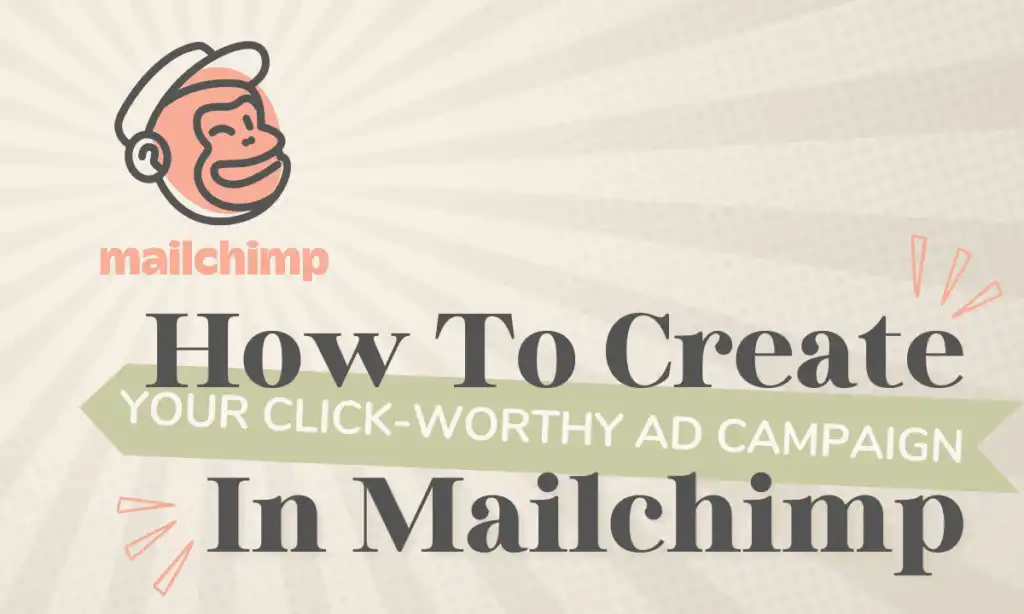
You may have heard that customers need to see a brand seven times before they buy. Email marketing allows you to have multiple connections and cross that seven contact point threshold. Best of all, this communication channel doesn’t feel intrusive. It’s the right way to break through with your customers.
When should you use email marketing?
Email marketing has many uses. Some of the more common reasons are to:
- Boost brand awareness — Stay top of mind while providing relevant and valuable information.
- Generate leads — Exchange something of value for contact information.
- Build relationships — Grow consumer confidence through personalized engagement.
- Promote content — Share valuable information, like blog content and generate traffic to your website.
- Market products or services — Introduce a new or existing product or service.
These are merely a sampling of what you can do with email marketing. The good news: All these email types can be created with an email-builder like Mailchimp.
How will people sign up? Create options.
You need people to email, don’t you?
You need an email list, or a group of people you have permission to send relevant content. To build that list, it’s best you have several options for those interested to sign up for emails.
One option is to add an opt-in box at checkout or on your site to allow customers to receive your emails. Beyond an opt-in, create an attractive invitation form to host on your site.
You want to drum up some excitement with the invitation. Make it clear what they’ll be getting and what it is they are signing up to receive. If using a signup form, keep it simple. Don’t scare the prospect away with long fields. Ask for the essentials: name and email.
Unsubscribe. A blessing in disguise?
Landing an invite to someone’s inbox is half the battle. The other half is staying there.
Put simply, you’re in it for the long game. You need to be in front of your customer as much as possible.
For one, that means you want to minimize the risk of someone unsubscribing.
Hate to break it to you, but people will unsubscribe. It’s inevitable.
When unsubscribes happens, consider it a blessing in disguise. It’s simply uninterested parties removing themselves from the equation. You weren’t going to convert them anyways.
But you want to maintain interested parties as best you can. Generally, the more you can minimize unsubscribes, the more successful your campaigns will be.
Why do people unsubscribe?
What’s the top reason people unsubscribe from emails? Bad content.
It may sound simple. But quality, engaging content is fundamental to a good campaign. Is there value to what you’re sending? Does this email message along with your brand? Is this email worth getting excited about? Ask yourself these questions before you hit send.
Quick tip: Provide value to your customer before trying to upsell. You don’t want to come across needy.
Bonus points: Simple is effective
May I have your attention?
What sounds like a simple ask is really asking a lot. Adult attention span is about seven seconds — and trending less. In fact, of all emails opened on mobile devices, one-fourth are read in eight seconds or less — and that’s if they’re opened at all.
Keep your customer engaged by making the email overly simple.
- Use bullet points for fast information consumption.
- Keep paragraphs short for easy skimming.
- Put your call to action above-the-fold.
Simple is always best.
Why email subject lines matter — and how to write a good one
Factor this, 91% of consumers check their email once per day. Impressive, right? Remember this, though: that’s how many check their email. I didn’t say they open every email.
What good is an unopened email? Think about it. If you can’t get your email opened, your content doesn’t matter. Quality content alone won’t get your email opened.
It’ll take a snappy subject line to get your email opened. I’m not downplaying the significance of a good subject line, either. One-third of emails are opened based on the subject line alone.
What makes a good subject line? Well … it’s complicated. No unifying message can guarantee you a high open-rate. But one universal tip seems to work well here: Be different.
Take a look at your email inbox. If yours looks like mine, you’ll see the email subject lines all blur together.
It may not be easy to stand out. But there’s value should you take a chance and make an effort to be different. Because remember, not every email is opened. The ones that stand out may get a few more looks than the rest.
Email subject line best practices: You know what gets you to click. What works for you usually works for others, too. Likewise, some terms regularly stand out and produce positive open rates.
- Buzzwords – “Sale,” “New,” and “Video” are all effective. “Free” is good, too.
- Timely topics – Relevant topics tend to trend well. Who doesn’t love a pop culture reference?
- Questions – People engage with questions because they know the answer or want to learn it.
Don’t be afraid to run some tests
Familiar with the name Morning Brew? It’s one of the fastest-growing business newsletters, and it’s in my inbox every morning. I wondered how Morning Brew devised its always-clever subject lines, and it turns out there’s a strategy.
Morning Brew does A/B testing — every morning — with up to four subject lines. Knowing its audience, Morning Brew has segmented groups to receive its daily newsletter earlier than everyone else.
In the early hours, Morning Brew sends four groups each representing 3% of the total audience, its newsletter with a different subject line. The winning subject line by measure of opens is sent to the remaining 88% at 6 a.m. Some days, they see as much as a 10% jump in open rate, simply given the subject line.
Need more reason to do testing? Companies that did A/B testing reported 37% better returns than those who did not, per one study.
Point being, don’t be afraid to try a few options out.
Bonus points: Personalized feels right
Think about the last time you got your mail. Real mail, from the mailbox. I bet you skimmed through the ads and bills looking to see if you had anything from a familiar name. Letters from friends or family (do people still send those?) are most eye-catching.
Email is the same.
With Mailchimp, you can change the delivery to a more personalized look.
For example, I get personalized emails from company CEOs or brand personalities all the time. Is the high-level CEO actually emailing me? No (sighs). But I feel a connection to that person and am more inclined to open their email.
Not only do I feel like I know Austin Rief at Morning Brew, but I am excited to open his email. I don’t get that same satisfaction in an email from Brand XYZ.
If that weren’t already a good reason to personalize, here’s another. Personalized emails, with a distinct name, location, and important business info included are much less likely to end up in a Spam folder.
Simple ways to get the most out of your email marketing campaign
What’s in an email? A lot of things.
The key to a good email marketing campaign is intent. You need to decide what the goal of your campaign is. Of course, your long-term bottom-line goal is to increase sales, but what’s the goal with your specific campaign?
Maybe your goal is to learn how your customer perceives your business. Perhaps your goal is to direct traffic to a specific landing page. It could be that your goal is to highlight a value-add your company provides.
Some companies use email marketing to share free resources. Mailchimp makes it easy to share blogs and new content. Other companies provide a timely newsletter to keep their vested customers interested and informed.
With Mailchimp, you have a quality selection of options. Below are a few different marketing campaign options available free through Mailchimp.
Email Capture Campaign
One common campaign many companies start with is an email capture campaign. This campaign is used to find and gain new customers. If you have a small advertising budget, a computer with Wi-Fi, and a few minutes, you can get this campaign up and running.
What are the best practices with this campaign style? It’s always good that to get something, you should offer something in return. With this campaign, you’re asking your audience to share their contact information. Don’t be afraid to reward them with something to say thanks. After all, this is your entryway.
Many who use this strategy offer a free item or service. If that’s you, make it something you can easily and affordably replicate hundred (or even thousands) of times. This item should not be a drain of resources. Trust us, everyone loves a freebie.
Want to start on this campaign fast? We have an easy 3-step process available here.
New Product or Sale Campaign
Another campaign type is a new product release or sale. You likely have a few of these emails sitting in your inbox right now.
It’s simply companies sharing info on specials running that week or month. With email marketing, it’s key your brand is there when a customer is ready to buy. A little nudge in that direction with a well-crafted email and a purchase link can help lead your customers that way.
These emails have plenty of subject line potential. Customers love seeing a discount in the subject line. Such an email might be the thing that leads them to make a purchase.
Think about it. What would you do if you were considering a purchase and then found that 15% off discount in your inbox? It works.
Blog and Newsletter Campaigns
Newsletter emails are trendy and informational.
These are also great for companies who provide an on-going service.
For example, an apartment complex might send residents a monthly or weekly email. It might contain community updates and rules reminders.
Should your brand be in the news or have news to share, it’s worthwhile to inform your audience through a regularly scheduled newsletter.
Maybe your company sends out a blog or free resources to your customers. You have a resource you think your customers might like. So, you share it — for free.
If you came to this blog via an email, you saw this process first-hand.
There are a few best practices for this email type. It’s important to note that most emails like these will not yield a similar interaction like the others. A new product or sale announcement is usually more exciting. You can still make newsletters interesting.
For starters, decide what type of email formatting you want. Having consistent formatting can make your customers feel more comfortable. It gives them an idea of what to expect.
Make it more interesting by changing up the content contained within the email though. You might also consider including coupons. If you are partnered with a nearby company, see if you can offer a deal. You can offer them free advertising, and they can give your customers an extra coupon. “Save 20% on Matt’s BBQ – this weekend only!”
Survey and Polls
Feedback is a good thing.
If you want feedback or a review, it’s not a bad idea to send out a survey question or poll to get a pulse-reading from your customers. But take note: level your expectations on results.
Asking your audience to engage with a survey (without a freebie in exchange) will normally yield few results. If you can offer something in exchange, your results volume is likely to change. But note that you can do so without — just be OK if you get 5% (or fewer) responses.
What are best practices with this email type?
Keep it simple. No one asked to take a test or be belabored with a list of questions. To get the best response rate, limit the ask.
- Ask fewer than five questions. If you can go with less, use less.
- Have multiple-choice options and keep written response options at bay.
- Leave an option for written responses and make it optional.
Specialized Landing Pages
If you have a campaign and want to track what customers are clicking, use a landing page.
A major benefit to landing pages is you can learn more about your customers. For example, if you have a mobile app, using specialized landing pages for the App Store and Google Play, you can track which is higher performing.
Another example is a children’s clothing store that might have a landing page with two links — one for “first time parents” and another for “experienced parents.” With specialized landing pages, you can find information important for your marketing strategy.
Overall best practices for building a successful email
You will send out emails that won’t be opened. Links that won’t be clicked through.
It happens.
Typical open rate is about 21% and average click-through rate (people who follow the link in the email) is just over 2%. Yes, only about two in every 100 recipients will actually click your link.
If you are anywhere near this mark or above it, you’re doing great! A reminder that these metrics will change, depending on the industry, size of your business, and your email type.
I can’t stress this enough: You’re in it for the long haul. Don’t fret if your first few email marketing campaigns don’t go well. Steady improvement is what you should strive to achieve. It’s rare — if not, impossible — to have an overnight success.
Prioritize your open rate. Overall, you can improve both rates by improving your open rate. More people opening your emails means a better likelihood that people will click through to your link.
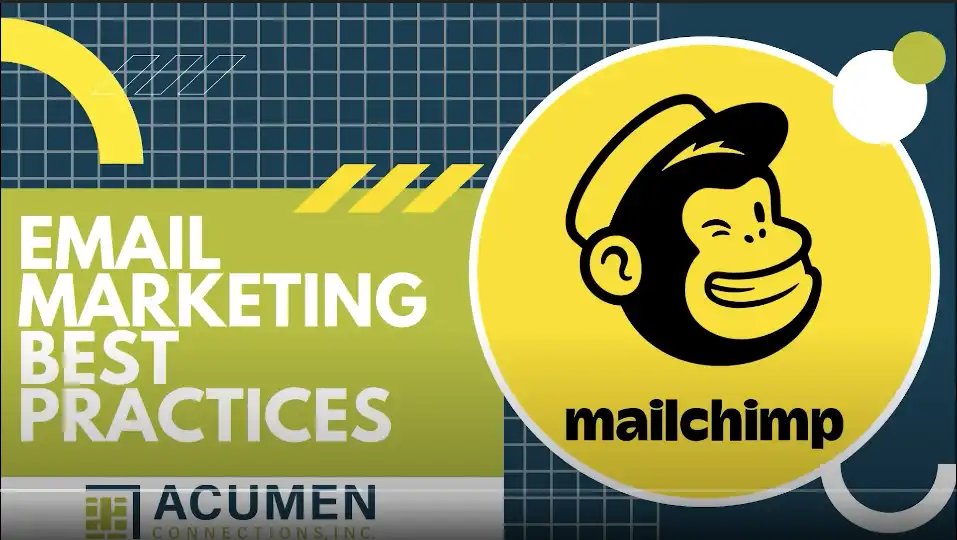
Helpful Tip 1: Think of creative and fun subject lines. What email would you open? Try A/B testing and see what yields better results.
How about an example? Say your company decides to send a coupon only to customers who have bought something recently. You send a specific link over email. That link takes that customer to a page with the discount. You could say in your subject line “Save money this weekend!” But that wouldn’t get the same results as something like: “Open for your exclusive link to save 30%.”
Helpful Tip 2: Make it clear what you want the customer to do. Do this with a call-to-action button that clearly stands out from the rest of the email. The more easily identifiable you make your call to action, the better.
If you got your email opened, you are halfway home. Now you have to get a click. Clear every obstacle for your customer to make it happen.
Helpful Tip 3: Proofread your email. Does your tone sound right? Read everything aloud and hear how it sounds. How’s your spelling? Spelling errors are a red flag for customers and may damage your brand trust. Do your links work?
You can use Mailchimp to deliver yourself a test email. Open that email on your computer and on your phone. You’ll never regret double-checking and proofreading your email.
Helpful Tip 4: Know when and when not to send. Nearly 51% of consumers have unsubscribed from lists because a brand was sending too many emails. What’s too many? There’s no definitive answer, but about 50% of marketers send between 3-8 emails per week.
Treat it like you are a guest in their inbox. Yes, you should regularly be in their inbox. Just don’t show up uninvited. You’re in the neighborhood. But you don’t show up on their doorstep every morning — and that’s OK.
When is the right time to send? Well, that’s kind of unique to your brand and audience. In the U.S., 21% of email happens between 9 a.m. and noon, local time. You can use Mailchimp to learn when your audience best engages with email.
Bottom line
Email marketing is a big deal and can lead to big results. As you establish more personalized relationships with your contacts, you will see better engagement and conversion rates.
Refer to this guide as you continue to build better email marketing campaigns. We can’t wait to see what you have in your inbox.
What’s your favorite email marketing tip? Share with us in the comments and let us know.
Acumen Connections is a locally owned and operated payment processor in Wichita, Kansas. Our organization seeks to help small businesses meet their goals with real solutions designed by real hardworking people. To help businesses and individuals achieve personal and professional successes, we’re providing new content weekly. Stay up on our posts by visiting the Acumen Connections Facebook, Instagram or Twitter pages, and visit the blog for a full catalog of resources fit for hardworking people.
Renee McBride

